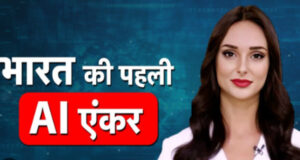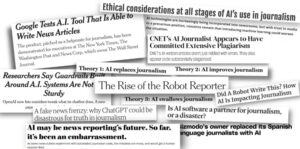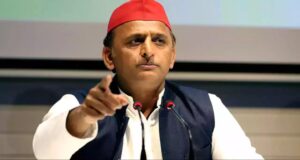Industry after industry is being completely transformed by artificial intelligence (AI), and the media world is no different. We have made a history by appointing the first artificial intelligence (AI) news anchor in March this year. The future of journalism is a topic of discussion and exciting concerns are raised by this technological advancement. Does this represent a promising development in news delivery and audience engagement, or does it represent a risk to human journalists?
Indian AI Anchor
 An important announcement was made by a media firm India Today, who unveiled their first-ever full-time artificial intelligence (AI) news anchor. This artificial intelligence (AI) bot, called Sana, updates the India Today Group’s Aaj Tak news channel several times a day with news updates.
An important announcement was made by a media firm India Today, who unveiled their first-ever full-time artificial intelligence (AI) news anchor. This artificial intelligence (AI) bot, called Sana, updates the India Today Group’s Aaj Tak news channel several times a day with news updates.
Sana is a machine that looks like a human and speaks data that is provided to it via text-to-speech technology. Since the release of ChatGPT, an AI-generated news presenter, in November of last year, the field has been progressively gaining traction.
Threats and Challenges
It goes without saying that there would be some difficulties and worries before the media. Take a look:
Absence of Human Element: The absence of human emotions, intuition, and critical thinking skills is one of the main issues with AI news anchors. It may be difficult for AI to impersonate the distinct viewpoints, context, and judgement that journalists frequently contribute to news reporting.
Ethics: Concerning ethical concern and transparency, AI news anchors bring up moral issues. It is the right of audiences to be aware of whether they are speaking with a human news anchor or an AI-generated one. Sustaining trust and ethical norms requires transparent communication.
Bias and Authenticity: Since AI news anchors rely on pre-programmed data and algorithms, there is a risk of prejudice or false information. For AI systems, ensuring impartiality, fairness, and accuracy in reporting continues to be a major difficulty.
Job displacement: There may be worries about employment losses among human journalists as a result of the deployment of AI news anchors. AI may expedite the news-gathering process, but rather than taking the role of human journalists, it should be seen as an additional instrument.
Technical Restrictions: AI news presenters could have trouble interpreting complex human behaviour, recognising cultural context, or managing unexpected circumstances. AI systems may have difficulties when it comes to reacting to unforeseen circumstances like breaking news.
Are Journalism jobs at risk?
In March, NewsGPT, the first news channel whose programming is fully created by artificial intelligence (AI), was launched to the public. Concerns have been voiced over this development’s possible danger to media professionals’ jobs. NewsGPT’s CEO, Alan Levy, praised it as a game-changer for the news industry, but as journalistic robots proliferate, concerns about its potential effects are growing.
AI will surely have a long-lasting impact on journalism, but it is still too early to tell how much of an impact it will have. Though doubts have been raised about bots’ abilities to participate in impromptu arguments, it may offer news updates.
Investigative journalism, on-the-ground reporting, and explanatory journalism could be the keys to countering the spread of AI journalism. These facets of journalism may be difficult for AI bots to imitate as they depend on human observation and experience.

















